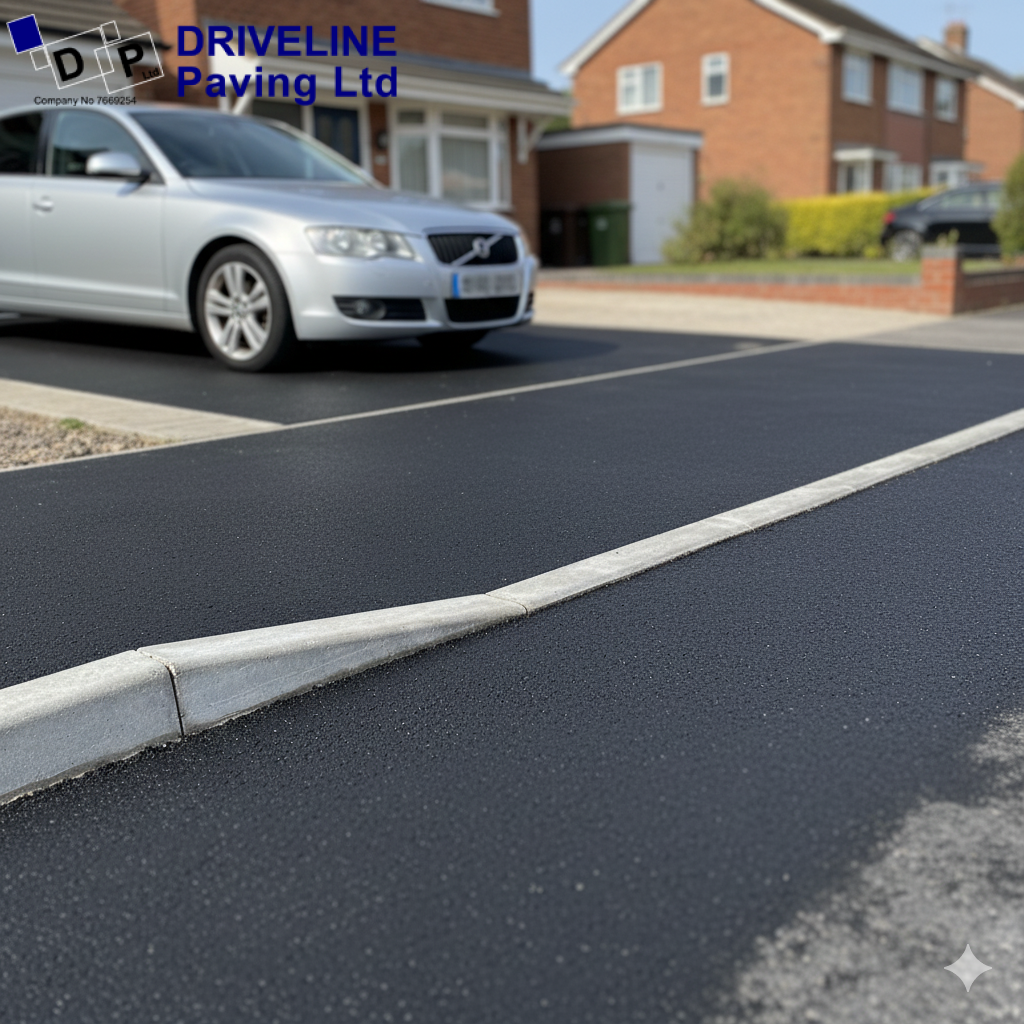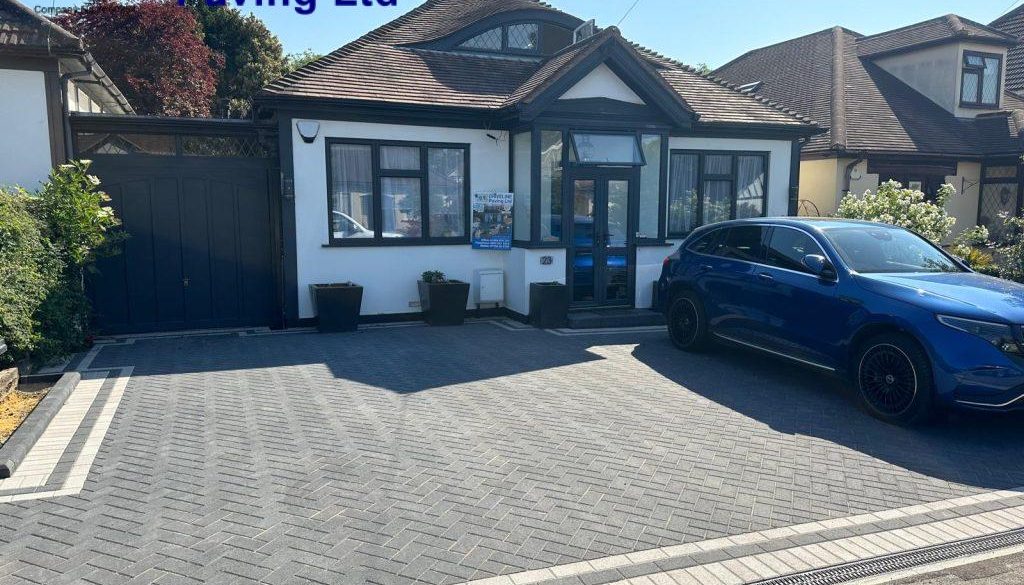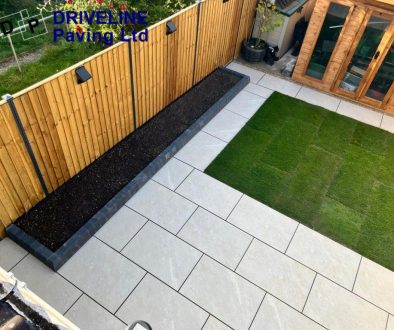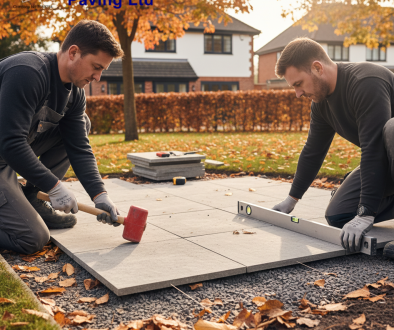Dropped Kerbs in Essex: Rules Every Homeowner Should Know
If you’re planning a new driveway in Essex, one of the most important legal and practical details is the dropped kerb. Also known as a vehicle crossover, a dropped kerb allows vehicles to move safely from the road onto private property. Without one, driving over the pavement is not only unsafe but can result in fines or damage to your vehicle.
Before starting any driveway project, homeowners must understand the local regulations, planning permissions, and installation requirements. Getting this step right ensures compliance with council rules, protects your investment, and prevents future disputes or penalties.
What Is a Dropped Kerb?
A dropped kerb is a lowered section of pavement at the edge of a property, designed to provide smooth access from the road to a driveway. The kerb stones are carefully cut and re-laid to create a gradual slope that vehicles can cross without damaging the pavement or tyre sidewalls.
In Essex, installing a dropped kerb requires approval from the local council because pavements and verges are public property. Councils have strict standards for safety, design, and construction to ensure pedestrian routes and drainage systems are not compromised.
Even if you already have a driveway, adding or altering access points without permission is a legal offence. That’s why understanding your responsibilities—and hiring a licensed contractor—is essential.
Why Permission Is Required
Dropped kerbs affect public highways, which are managed by local authorities under the Highways Act 1980. When you apply for permission, the council reviews several key factors:
- Road safety: Ensuring vehicles can enter and exit without obstructing traffic or pedestrians.
- Visibility: Checking that the driveway does not block sightlines for road users.
- Drainage: Preventing water from running off your drive onto the pavement or road.
- Utilities: Avoiding disruption to underground services such as cables, drains, and gas lines.
Ignoring this process can lead to enforcement action, fines, and the removal of unauthorised work. Having official approval guarantees that your dropped kerb meets all safety and structural standards from the start.
How to Apply for a Dropped Kerb in Essex
Each council in Essex—such as Chelmsford City Council, Basildon Borough Council, or Essex County Council—has its own application process, but most follow similar steps.
- Check eligibility: You’ll need a front garden large enough for safe parking (usually at least 4.8 metres long).
- Submit an application: This includes site details, a scaled drawing, and photographs.
- Pay an application fee: Fees vary but typically cover inspection and processing costs.
- Site inspection: A highways officer visits your property to assess road safety, visibility, and utilities.
- Receive approval and conditions: Once approved, you’ll receive written consent with specific requirements for construction.
Only then can work legally begin. Attempting to install a dropped kerb before approval is granted may result in fines or the removal of the crossover at your expense.

Using Approved Contractors
Local authorities in Essex require that dropped kerbs be installed by council-approved contractors who meet strict insurance and competency standards. This ensures all work complies with highway regulations and safety criteria.
Approved contractors are trained in excavation, drainage installation, kerb alignment, and surfacing. They also coordinate with utility providers to avoid damaging underground services. Choosing an unapproved or unqualified installer risks rejection, liability for repair costs, and potential legal action.
Professional contractors not only handle construction but can also assist with applications and provide advice on the best design for your property’s layout.
Design and Safety Requirements
Dropped kerbs aren’t one-size-fits-all. Councils set precise design guidelines to ensure accessibility and durability. Typical requirements include:
- Minimum width: Usually 2.75 metres for a single driveway and 4.8 metres for shared access.
- Gradient: A gentle slope between the pavement and road surface for smooth vehicle transition.
- Materials: Matching the existing pavement or using council-approved alternatives.
- Drainage provision: Preventing surface water from flowing onto the highway.
Additional factors such as street lighting, proximity to junctions, and pedestrian crossings can influence approval. A professional contractor will adapt your design to meet all local criteria while maintaining kerb appeal.

Dropped Kerbs and Driveway Resurfacing
If you’re planning to resurface or extend your driveway, now is the perfect time to review your kerb access. Many older homes in Essex have narrow or uneven driveways installed before modern regulations. Upgrading both the driveway and kerb together ensures a consistent, polished look and full compliance with current standards.
Installing a new driveway without adjusting the kerb can lead to uneven entry points or premature damage from vehicle tyres scraping the edge. Combining both projects saves time, reduces labour costs, and creates a seamless transition between the road and your property.
Common Mistakes to Avoid
Several issues can delay or complicate a dropped kerb application. Being aware of these helps you avoid unnecessary setbacks:
- Starting work before approval: Even partial excavation without consent can trigger enforcement.
- Using unlicensed contractors: Councils will not certify or adopt unauthorised work.
- Ignoring drainage: Overlooking run-off control leads to failed inspections.
- Choosing poor materials: Cheap asphalt or concrete deteriorates quickly under traffic stress.
Taking time to plan properly ensures the job passes inspection the first time and remains durable for years.
Costs and Timescales
The cost of installing a dropped kerb in Essex varies depending on the property layout, road type, and materials. As a general guide, homeowners can expect to pay £1,000–£2,500, including council fees and construction.
The approval process usually takes 4–6 weeks, while installation itself typically takes 2–3 days once permits are granted. Complex sites—such as those with steep gradients or nearby utilities—may require additional preparation. Hiring an experienced contractor helps avoid delays and ensures the work meets council standards on the first inspection.
Benefits of Installing a Dropped Kerb
Beyond legal compliance, a properly installed dropped kerb offers several long-term benefits:
- Convenience: Easier, smoother vehicle access.
- Protection: Prevents tyre and suspension damage from high kerbs.
- Value: Enhances property appearance and increases resale potential.
- Safety: Reduces pavement damage and improves pedestrian safety.
It’s an investment that adds practicality and visual harmony to your property, especially when paired with a newly finished driveway.
Comply Confidently with Driveline Paving Ltd
Understanding the rules around dropped kerbs ensures your new driveway is both legal and long-lasting. From securing council permissions to completing professional installation, each stage demands careful attention to detail.
Driveline Paving Ltd is fully qualified to install dropped kerbs in Essex and North London, adhering to local authority standards. Our experienced team manages applications, coordinates with councils, and delivers safe, durable crossovers that meet every requirement.
Ensure your driveway upgrade is compliant and built to last—contact Driveline Paving Ltd today for professional dropped kerb installation and expert guidance through every step of the process.





